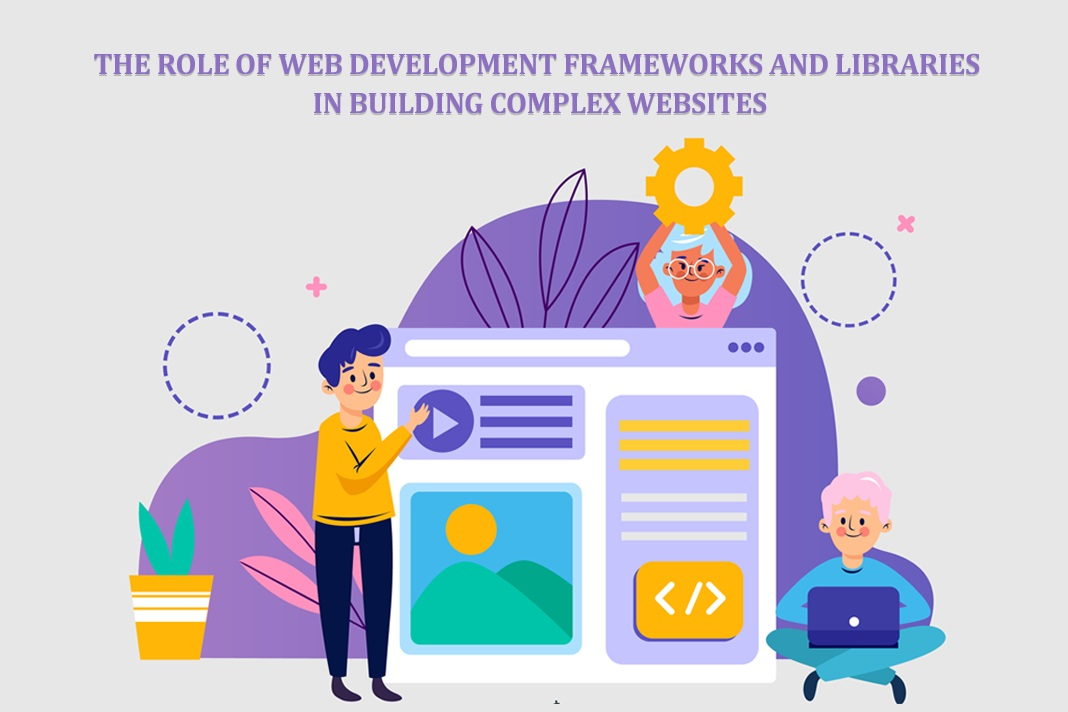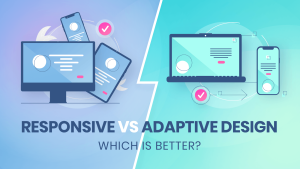The Framework Renaissance is transforming modern web development. Learn why lightweight frameworks like Astro, Qwik, and Remix deliver faster performance, scalable architecture, and superior UX — and why these lean technologies are winning the web again.

What Is the Framework Renaissance? (Focus Keyword)
Framework Renaissance marks a return to speed, simplicity, and sustainability in modern web engineering. For years, bulky monolithic frameworks dominated development, but they also brought slow load times, heavy bundles, and complex maintenance.
Today, lightweight frameworks are reclaiming the web, proving that lean architecture = better performance + happier users + lower cost.
-
What Is the Framework Renaissance? (Focus Keyword)
-
The Rise of Minimalist Frameworks: A Return to Essentials
-
Astro: Performance-Driven Content Architecture
-
Qwik: Resumable Apps & Instant Interactions
-
Remix: Server-First Simplicity Without Sacrifice
-
Breaking the Monolith: Component-Based Agility
-
Sustainable Web Design Through Lightweight Frameworks
-
Minimalism for Maximum UX Impact
-
Strategic Advantages of Lightweight Architectures
-
Challenges & Considerations
-
The Future of Web Architecture
-
Conclusion: Why the Framework Renaissance Defines the Web’s Future
In an era where speed, scalability, and sustainability are more than technical buzzwords, the web development landscape is undergoing a profound transformation. The heavy, monolithic frameworks that once dominated enterprise and consumer-facing applications are being challenged by lightweight, performance-centric architectures. This shift is not merely a trend; it is a renaissance — a Framework Renaissance — that is redefining how developers approach code, collaboration, and user experience.
At the heart of this movement are micro-frameworks and minimalist architectures that promise agility, efficiency, and adaptability. Frameworks such as Astro, Qwik, and Remix are spearheading this revolution, demonstrating that lean, well-optimized code can deliver superior performance, lower environmental impact, and enhanced user satisfaction.
This article explores why lightweight frameworks are reclaiming the web, how they disrupt traditional monolithic systems, and why simplicity is the ultimate sophistication in modern web engineering.
I. The Rise of Minimalist Frameworks: A Return to Essentials
The web’s early architecture favored simplicity. HTML, CSS, and JavaScript were sufficient for small-scale sites. Over time, as applications became more complex, frameworks emerged to manage growing demands for interactivity, dynamic content, and maintainability.
Frameworks like Angular, Ember, and even early versions of React brought all-in-one solutions, bundling routing, state management, and templating into a single monolithic structure. While they empowered developers to build sophisticated applications, they also introduced significant performance overhead. Page load times increased, bundle sizes ballooned, and the user experience often suffered, particularly on low-bandwidth networks or mobile devices.
Enter the new generation of micro-frameworks and lightweight architectures. These frameworks strip back unnecessary complexity, focusing on core responsibilities, high performance, and component-driven design. By prioritizing only what the application truly needs, they allow developers to create faster, leaner, and more maintainable codebases.
1. Astro: Content-Focused, Performance-Driven

Astro exemplifies the philosophy of “less is more”. Unlike traditional frameworks, Astro renders static content at build time by default, drastically reducing client-side JavaScript. It allows developers to integrate components from multiple frameworks (React, Vue, Svelte) without forcing the entire runtime to load on the client.
The result is:
- Faster initial page loads, which improve SEO and user engagement
- Smaller bundle sizes, reducing bandwidth usage and hosting costs
- Component-level flexibility, allowing mixed-framework architectures without bloating performance
Astro’s approach underscores a fundamental principle of lightweight frameworks: deliver only what is necessary to the user.
2. Qwik: Instant Loading and Progressive Hydration
Qwik pushes minimalism further by introducing the concept of resumable applications. Unlike traditional hydration-based frameworks, Qwik resumes the application state without re-executing JavaScript on the client. This results in near-instantaneous loading and interaction — a paradigm shift for web performance.
Key benefits of Qwik include:
- Optimized time-to-interactive, ensuring users can engage with content immediately
- Fine-grained code splitting, only loading necessary components
- Enhanced developer experience, allowing modular development without sacrificing speed
Qwik demonstrates that lightweight frameworks are not a compromise; they are performance-maximizing solutions that redefine expectations for modern web applications.
3. Remix: Simplifying Complexity Without Sacrificing Power
Remix takes a data-focused approach to minimalism, optimizing routing, data fetching, and caching. By moving more logic to the server and leveraging modern browser capabilities, Remix ensures that client-side JavaScript is minimal yet fully functional.
Benefits include:
- Reduced client-side overhead, leading to faster rendering
- Enhanced SEO performance through server-rendered content
- Scalable architecture, ideal for dynamic web apps with complex workflows
Remix illustrates that lean design does not mean weak design — it is a deliberate strategy that balances speed, maintainability, and user experience.
II. Breaking the Monolith: Component-Based Agility
One of the most profound shifts enabled by lightweight frameworks is the move away from monolithic architectures toward component-based design.
In monolithic frameworks, changes to a single page or feature often required rebuilding or redeploying the entire application. This not only slowed development but also increased risk: a small error could have far-reaching consequences.
Component-based architecture, by contrast, allows developers to build reusable, independent units of functionality. These components can be:
- Reused across different pages or projects
- Independently tested and optimized
- Updated without affecting unrelated parts of the application
Frameworks like Astro, Qwik, and Remix embrace this modularity, creating agile codebases that scale with minimal friction. This agility is particularly crucial for teams practicing continuous integration and continuous deployment (CI/CD), where rapid iteration is essential.
III. Eco-Efficiency and Sustainable Web Design
The environmental impact of digital infrastructure is often overlooked, yet it is increasingly critical. Larger frameworks with excessive client-side scripts contribute to higher energy consumption, both on the server and on user devices.
Lightweight frameworks inherently support sustainable web design by:
- Reducing bundle sizes, which lowers bandwidth and energy usage
- Minimizing client-side processing, which reduces device energy consumption
- Encouraging static generation and caching, lowering server load
Astro, for example, has been lauded for its “zero-JS-by-default” philosophy, which eliminates unnecessary client-side execution and reduces carbon footprint. Qwik’s resumable architecture also ensures minimal processing, cutting down energy use on repeated page visits.
By combining performance and sustainability, lightweight frameworks align with modern corporate ESG goals, positioning eco-efficient web design as a competitive advantage.
IV. The Minimalist Approach to Maximum UX Impact
In web development, user experience (UX) is often inversely proportional to complexity. Heavy frameworks introduce latency, slow rendering, and unwieldy interactions — all detrimental to UX.
Lightweight frameworks focus on what truly matters to users:
- Instant loading times
- Smooth interactions without lag
- Consistent visual and functional experience across devices
Minimalism also enhances accessibility. Fewer dependencies, lighter scripts, and clean architecture make it easier to ensure keyboard navigation, screen reader compatibility, and adaptive design. The result is a more inclusive web experience, accessible to a global audience.
Moreover, minimalist frameworks allow developers to iterate faster, introducing UX improvements continuously without disrupting the core experience. In the era of agile design, this continuous refinement is the secret to retaining users and reducing churn.
V. Lightweight Frameworks as a Strategic Advantage
Beyond technical benefits, adopting minimalist architectures offers strategic business value:
- Faster Time-to-Market
Lean frameworks allow development teams to deploy functional products quickly, test ideas, and respond to market feedback without being bogged down by bloated architecture. - Scalable and Maintainable Codebases
Component-based design ensures that teams can expand applications without accruing technical debt, reducing long-term maintenance costs. - Enhanced Performance Equals Higher Conversions
Studies consistently show that faster websites correlate with better engagement, lower bounce rates, and higher conversion rates. Lightweight frameworks directly contribute to measurable business outcomes. - Brand Perception and User Trust
A fast, responsive, and accessible web experience reflects positively on a brand, signaling efficiency, reliability, and professionalism.
VI. Challenges and Considerations
While lightweight frameworks offer significant advantages, adoption is not without challenges:
- Learning Curve: Developers accustomed to traditional monoliths may need time to embrace new paradigms.
- Ecosystem Maturity: Emerging frameworks sometimes lack mature plugins or extensive documentation.
- Team Coordination: Component-based, modular approaches require disciplined development and version control practices.
However, for teams that invest in training, tooling, and agile processes, the benefits far outweigh these initial hurdles. The transition represents a forward-looking investment in speed, scalability, and user satisfaction.
VII. The Future of Web Architecture

Looking ahead, the Framework Renaissance is likely to accelerate:
- Hybrid Approaches: Combining micro-frameworks with serverless architecture and edge computing for ultra-fast, globally distributed applications.
- AI-Powered Optimization: Intelligent build tools that analyze usage patterns and automatically optimize bundle sizes, routes, and caching.
- Universal Components: Interoperable modules that function seamlessly across frameworks, reducing lock-in and increasing flexibility.
- Sustainability Metrics: ESG-focused web design becoming a standard KPI in enterprise development.
In essence, lightweight architectures are not just technical solutions — they are strategic enablers for the modern web.
VIII. Conclusion: Simplicity Is the New Sophistication
The resurgence of minimalist frameworks signals a profound lesson for developers and businesses alike: complexity is the enemy of excellence. In an era of instant access, mobile-first design, and global connectivity, users reward speed, reliability, and elegance.
Frameworks like Astro, Qwik, and Remix exemplify how performance-centric, component-driven, and eco-efficient architectures can deliver maximum UX impact with minimal overhead. They demonstrate that simplicity is not a limitation, but a strategic design principle that drives technical excellence, sustainability, and business success.
The Framework Renaissance reminds us that in web development, the leanest, most thoughtful architecture often wins the race. As developers, embracing minimalism, agility, and performance is not just a technical choice — it is a commitment to excellence, innovation, and the future of the web.
The web of tomorrow is not heavier, more complicated, or more bloated — it is faster, smarter, and elegantly minimal.
Summary
“The Framework Renaissance” explores the rise of lightweight web frameworks, highlighting the performance, scalability, and sustainability advantages of micro-frameworks like Astro, Qwik, and Remix. By adopting component-based architecture and minimalist design principles, modern developers can deliver superior user experiences, eco-efficient solutions, and strategically agile web applications — redefining the standards of web engineering for 2025 and beyond.


